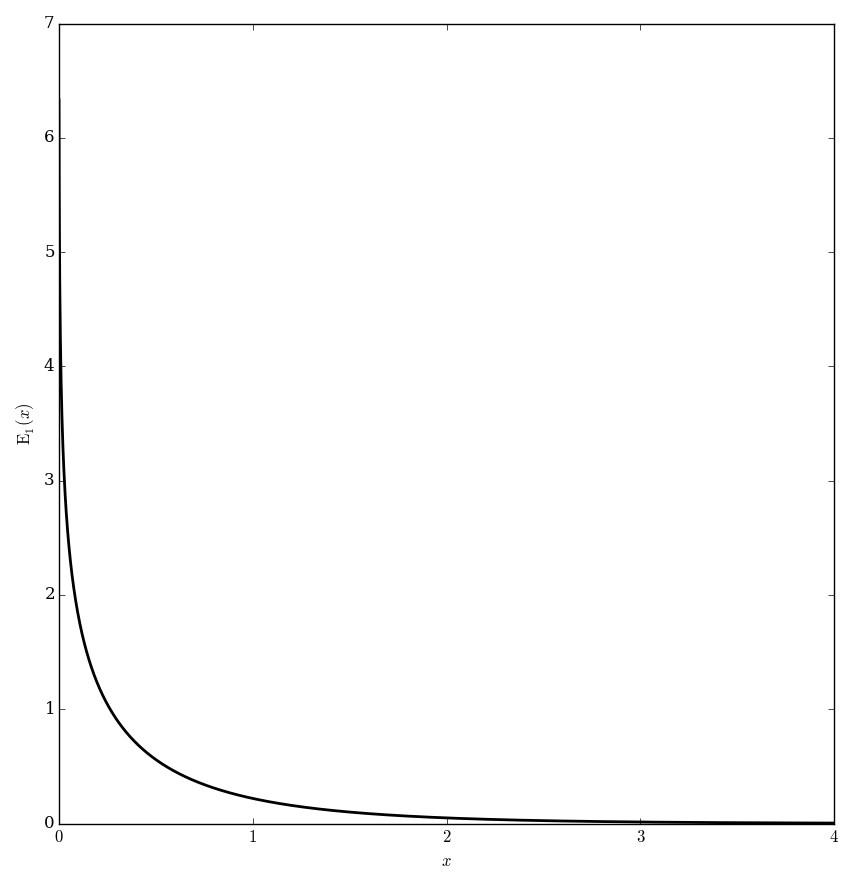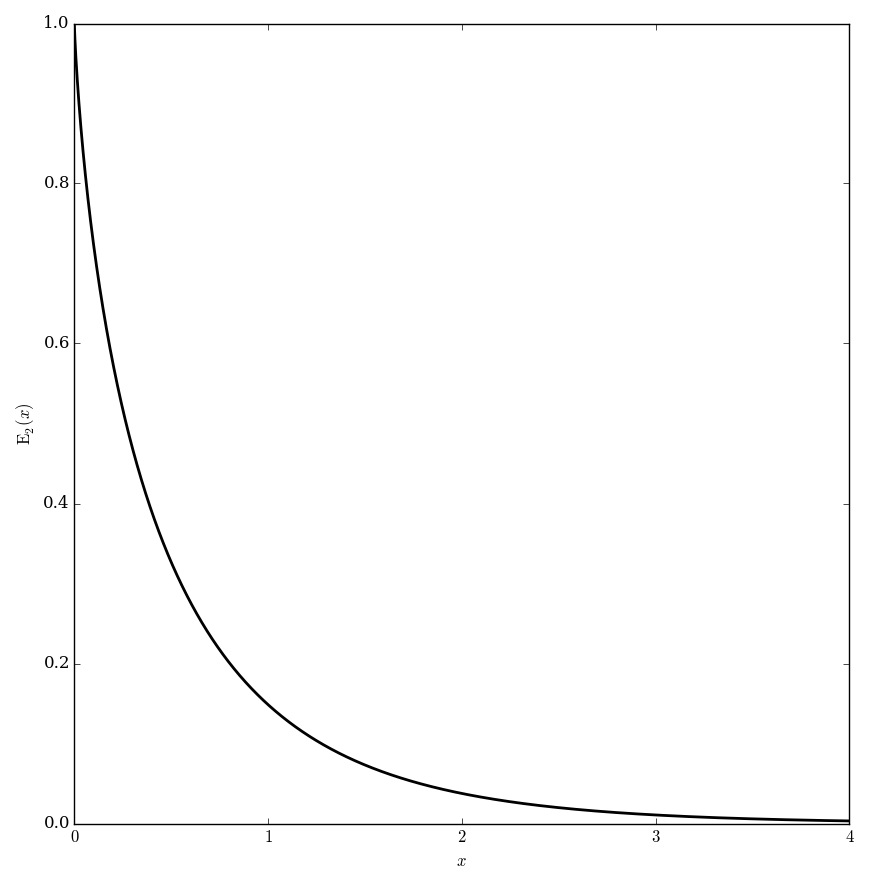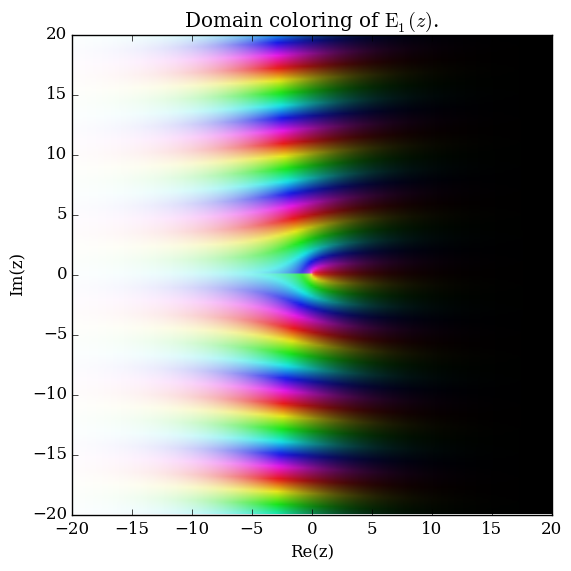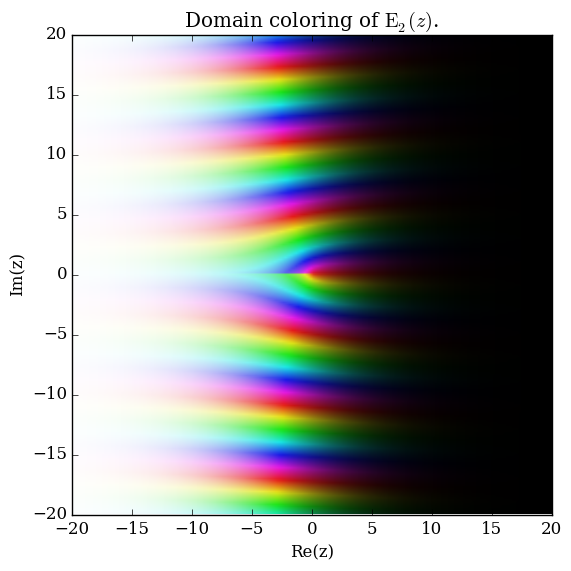Difference between revisions of "Exponential integral E"
| Line 10: | Line 10: | ||
File:E3plot.png|Graph of $\mathrm{E}_3$. | File:E3plot.png|Graph of $\mathrm{E}_3$. | ||
File:Complexe1plot.png|[[Domain coloring]] of $\mathrm{E}_1$. | File:Complexe1plot.png|[[Domain coloring]] of $\mathrm{E}_1$. | ||
| + | File:Complexe2plot.png|[[Domain coloring]] of $\mathrm{E}_2$. | ||
</gallery> | </gallery> | ||
</div> | </div> | ||
Revision as of 21:00, 23 May 2016
The exponential integral functions $E_n$ are defined by $$E_1(z) = \displaystyle\int_1^{\infty} \dfrac{e^{-t}}{t} \mathrm{d}t, \quad \left|\mathrm{arg \hspace{2pt}}z\right|<\pi,$$ and $$E_n(z)=\displaystyle\int_1^{\infty} \dfrac{e^{-zt}}{t^n} \mathrm{d}t.$$
Domain coloring of $\mathrm{E}_1$.
Domain coloring of $\mathrm{E}_2$.
Properties
Theorem: The exponential integral $E_1$ has series representation $$E_1(z)=-\gamma-\log z - \displaystyle\sum_{k=1}^{\infty} \dfrac{(-1)^kz^k}{kk!}, \quad |\mathrm{arg}(z)|<\pi,$$ where $\gamma$ denotes the Euler-Mascheroni constant.
Proof: █
Theorem (Symmetry): The following symmetry relation holds: $$E_n(\overline{z})=\overline{E_n(z)}.$$
Proof: █
Theorem (Recurrence): The following recurrence holds: $$E_{n+1}(z) = \dfrac{1}{n}[e^{-z}-zE_n(z)];(n=1,2,3,\ldots).$$
Proof: █
Theorem (Continued fraction): The following formula holds: $$E_n(z)=e^{-z} \left( \dfrac{1}{z+} \dfrac{n}{1+} \dfrac{1}{z+} \dfrac{n+1}{1+} \dfrac{2}{z+} \ldots \right); |\mathrm{arg} z|<\pi.$$
Proof: █
Theorem: The following value is known: $$E_n(0)=\dfrac{1}{n-1}; n>1.$$
Proof: █
Theorem: The following closed form expression is known: $$E_0(z)=\dfrac{e^{-z}}{z}.$$
Proof: █
Theorem (Derivative): $$\dfrac{d}{dz} E_n(z) = -E_{n-1}(z); n=1,2,3,\ldots$$
Proof: █
Theorem
The following formula holds: $$E_n(z)=z^{n-1}\Gamma(1-n,z),$$ where $E_n$ denotes the exponential integral E and $\Gamma$ denotes the incomplete gamma function.
Proof
References
Videos
Laplace transform of exponential integral
References
Exponential Integral and Related Functions




